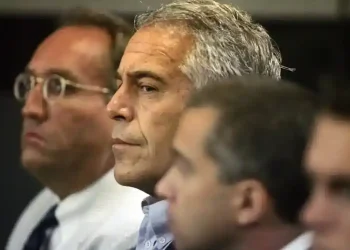Brain Drain? Why Scientists Are Looking Elsewhere as Trump Reshapes U.S. Research
Growing up in Brazil, neuroscientist Danielle Beckman always dreamed of coming to the United States to pursue her passion. In 2017, that dream came true when she landed a position at UC Davis, working at the California National Primate Research Center. Like so many international scientists before her, she saw the U.S. as the global capital of scientific innovation.
But now, that dream is slipping away.
In the wake of sweeping budget cuts, policy crackdowns, and what many call an ideological war on higher education under Donald Trump’s second term, Beckman no longer sees the U.S. as a place where her work—or she herself—is truly welcome.
“It’s the first time since I moved here that I don’t feel so welcome anymore,” she told CNN, after her lab lost $2.5 million in grant funding. “There’s interest in virology everywhere in the world—except the U.S. right now.”
She’s not alone. A growing wave of scientists, researchers, and academics—both American and international—are packing up and leaving the U.S. for more supportive environments abroad. What’s shaping up to be one of the most significant brain drains in decades may end up fueling a scientific renaissance in other parts of the world.
The Global Race for U.S. Talent
While the Trump administration slashes research budgets and restricts international academic access, countries like Germany, France, Canada, Australia, and Singapore are actively recruiting disillusioned U.S.-based researchers—and investing millions to do it.
- The European Union pledged €500 million ($562M) over three years to become “a magnet for researchers.”
- Canada’s top health research body is spending CA$30 million to attract 100 early-career scientists, many from the U.S.
- France has launched a “Safe Place for Science” program to provide refuge for threatened academics.
- Singapore is targeting top U.S. researchers and offering jobs within days.
- Norway and Australia have both announced aggressive new hiring initiatives aimed at American scientists.
“We know these individuals are highly trained, talented, and have much to offer,” said Anna-Maria Arabia of the Australian Academy of Science. “The interest has already been encouraging.”
Trump’s War on Academia
Under President Trump’s second term, the relationship between the federal government and top research institutions has fractured.
The administration has:
- Cancelled nearly 700 NIH grants, worth $1.8 billion, in just six weeks.
- Proposed a 40% budget cut to the NIH in 2026.
- Slashed $1.4 billion in grants from the National Science Foundation.
- Frozen federal funds to elite universities like Harvard over ideological disputes, including DEI programs.
- Temporarily banned Harvard from enrolling international students, a decision a federal judge later blocked.
White House Press Secretary Karoline Leavitt made the administration’s stance clear in a recent Fox News appearance:
“We need more electricians and plumbers, and less LGBTQ graduate majors from Harvard.”
This rhetoric, along with punitive funding decisions, has rattled researchers across the country. In a March 2025 survey by Nature, 75% of U.S. scientists said they were considering leaving the country due to government policies.
A Tipping Point for U.S. Scientific Leadership?
For decades, the United States has been the world’s research powerhouse—fueled by unmatched investments in R&D and an open-door policy that welcomed talent from around the globe. In 2023 alone, combined public and private U.S. R&D spending hit $900 billion.
The result? More than 400 Nobel Prizes, with over one-third awarded to immigrants.
But now, that legacy is at risk. “This is the most significant crisis universities have faced since World War II,” said Kenneth Wong, professor of education policy at Brown University. “We’re watching a collapse in the collaborative relationship between government and academia.”
And younger scientists—many of whom are just launching their careers—are especially vulnerable. They’re also more mobile, and global institutions are ready to welcome them.
“What we’re losing is a whole generation of highly productive, well-trained researchers,” Wong said. “These are people who are primed to take off—and they’re taking off somewhere else.”
The Rest of the World Steps Up
As U.S. support for science falters, other nations are seizing the opportunity.
- China invested over $780 billion in R&D in 2023 and continues to close the gap with the U.S.
- The European Union increased its R&D spending to $504 billion in 2023, up from $336 billion in 2007.
These shifts signal a major turning point: countries that once relied on U.S. research leadership are now building up their own ecosystems—and luring away the talent to power them.
Beckman, the Brazilian neuroscientist, says she considered stepping away from research entirely. But then international institutions started calling.
“Now, I’m looking at opportunities in Germany and France,” she said. “It feels like those places value what we do.”
A Global Opportunity—At America’s Expense
What began as a dream for many scientists like Beckman has turned into a wake-up call. While other countries embrace science and innovation, the U.S. risks isolating itself—politically, ideologically, and intellectually.
The question now is not just where the next generation of discoveries will be made—but who will still be around in the U.S. to make them.
This article was rewritten by JournosNews.com based on verified reporting from trusted sources. The content has been independently reviewed, fact-checked, and edited for accuracy, neutrality, tone, and global readability in accordance with Google News and AdSense standards.
All opinions, quotes, or statements from contributors, experts, or sourced organizations do not necessarily reflect the views of JournosNews.com. JournosNews.com maintains full editorial independence from any external funders, sponsors, or organizations.
Stay informed with JournosNews.com — your trusted source for verified global reporting and in-depth analysis. Follow us on Google News, BlueSky, and X for real-time updates.














